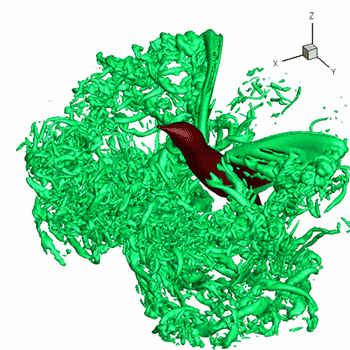color(white)(aaa)[A]color(white)(aaaaaaa)[B]color(white)(aaaaa)[C]
[(4,0),(-1,3),(2,-5)] * [(1),(-3)] = [(a), (b),(c)]
color(white)(aa)color(red)3" x "color(blue)2color(white)(aaaa)color(blue)2" x "color(red)1color(white)(aa)color(red)3" x "color(red)1
The size of the first matrix A is "2 x 2" because it has 2 rows and 2 columns. The size of the second matrix B is "2 x 1" because it has 2 rows and 1 column.
When the sizes are written next to each other, the "inner" numbers must match. The "outer" numbers determine the size of the resultant matrix.
The resultant matrix C has been labeled [(a),(b),(c)] and has size 3" x "1.
Position a is in the first row and first column. It's value is obtained by multplying the first row of matrix A by the first column of matrix B.
a=4*1 +0*3=4
Position b is in the second row and first column. It is the result of multiplying the second row of A by the first column of B.
b=-1*1+3*-3=-10
Position c is obtained by multiplying the third row of A by the first column of B.
c=2*1+ -5*-3=17
The answer is then [(4),(-10),(17)]

